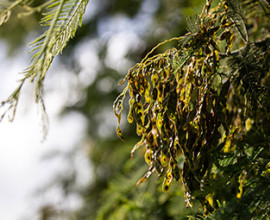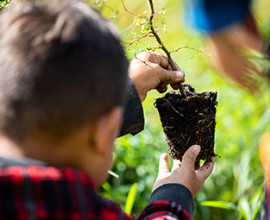Kaikōura Water Zone Committee Action Plan 2021-2024
Each of Waitaha/Canterbury’s water zone committees has an action plan which outlines how they will work with the community to deliver their aspirations for freshwater as outlined in the Canterbury Water Management Strategy (CWMS).
The CWMS puts the future of our water resources in the hands of the community. Zone committees work collaboratively to develop recommendations for councils and other organisations to deliver shared goals and targets.
Committee purpose
To uphold the mana of the freshwater bodies within Kaikōura by facilitating enduring land and water management solutions that give effect to the Canterbury Water Management Strategy (CWMS) vision, principles and targets in our zone.
The CWMS aims to enable present and future generations to gain the greatest social, economic, recreational and cultural benefits from our water resources within an environmentally sustainable framework.
Committee role
- To get involved in an active programme of community engagement on freshwater management matters.
- To facilitate relevant advice to councils and other organisations contributing to freshwater management.
- To extend the resources available to implement the CWMS by: working with stakeholders across all sectors and seeking opportunities to promote, support, leverage and expand catchment-based initiatives that deliver the CWMS.
- To report back annually to councils and Rūnanga on progress towards delivery of the zone-specific priorities.
Clean Water, Healthy Life – Waiora, Hauora, Mauri Ora

The committee on a field trip to Hāpuku Scarp Wetland.

Rod Lamb shows the committee his plans for Lamb Farm Wetland.
Our actions
Find out more about how we're tracking to achieve our goals and what progress has been made in the last year.
View the latest progress report
We will continue to support “ki uta ki tai” projects and identify future projects within our takiwā by:
Continuing to collaborate and support whole catchment management of the Waiau Toa/Clarence by:
-
Supporting and advocating to maintain or increase predator control of threatened and at-risk bird nesting sites
-
Continuing to support weed control in the existing four priorities
-
Continuing the conversation on how best to optimise whole of catchment weed and pest control within available resources and technologies
Continuing to support Waikōau/Lyell Creek catchment recovery by:
- Supporting the monitoring of tributaries and all forms of pollution in the catchment and advocate accountability.
-
Working with our community to improve amenity sites in the Waikōau/Lyell Creek including supporting an annual clean up and promoting community engagement
-
Using the Waikōau/Lyell Creek as an exemplar for future projects in particular, a watercress community garden proposal
- Public advocacy of responsibility around waterways to residents, businesses and farmers in the area.
Identifying new “ki uta ki tai” opportunities by:
- Identifying ‘ki uta ki tai’ projects and opportunities that support existing efforts in this space.
We will support kaitiakitanga within our zone by:
- Continuing to collaborate with local groups to promote kaitiakitanga as a responsibility for all.
- Supporting mana whenua and whānau on mahinga kai projects.
- Supporting the management and water quality monitoring of freshwater mātaitai.
- Advocate for and support actions to address challenges in meeting CWMS targets.
We will facilitate action to enhance biodiversity and improve amenity and recreation outcomes by:
Supporting the protection and enhancement of wetlands across the zone by:
- Supporting action and monitoring of existing funded wetlands.
- Facilitating landowner, community, and our schools’ understanding of the value of wetlands and wetland regulations.
Identifying and advocating action for priority areas to improve environmental outcomes and amenity and recreation opportunities by:
-
Working with our community to identify priority improvement areas, focussing on:
-
priority freshwater recreational opportunities
-
Coastal corridor and South Bay opportunities
-
Oaro catchment.
-
- Coordinating and supporting “on the ground” actions such as trapping and planting.
- Focusing advocacy on īnanga spawning sites.
We will support our community to respond to changing requirements, and share resources for good management practice by:
- Sharing information and resources for managing riparian margins with landowners to enable effective and integrated management.
- Sharing information and resources with our community to enable good kaitiakitanga of our zone.
- Supporting our community to understand new legislation requirements around freshwater management.
- Continuing community conversations exploring the role of Kaitiaki, the rights, responsibilities and gains that come from it. What does Kaitiaki mean in the 21st century?
We will facilitate understanding of catchment systems within our zone, build community knowledge and connection to these systems and increase public participation by:
- Building our understanding of our zone to enable us to provide robust advice.
- Building our understanding of Environment Canterbury’s water testing regime and the science behind it, so we can share our zones water story and progress.
- Working with mana whenua and whānau to build our community’s cultural understanding of our catchments.
- Building our collective understanding of catchments – identification, geological and hydrological features, and the impacts of climate change on our zone.
- Using our collective knowledge to identify mahinga kai opportunities.
- Investigating educational opportunities that encourage learning and research.
- Celebrating and sharing stories of success with our community.
- Incorporate learning conversations into our Love the Waikōau/Love the Lyell cleanup events.
Council priorities
Zone committees are joint committees of local and regional councils, with mana whenua and community representation. Councils provide CWMS priorities for each zone committee to guide the committee’s action plans.
Kaikōura District Council priorities
Ecosystem health
- Progress improvements to stormwater and wastewater infrastructure to reduce ecological damage to lowland streams from sediment and contaminants and fulfil requirements to obtain and comply with stormwater consents for townships by 2025.
- Review the state and operation of the district’s wastewater treatment plant infrastructure to address and reduce potential impacts on the district’s highly valued rivers.
- Continue regular community education/ behaviour change campaigns on stormwater issues and management.
Protecting biodiversity in our district by:
- Implement a system to protect SNAs and maintain indigenous vegetation and work with Environment Canterbury to develop a biodiversity monitoring strategy.
- Review vegetation clearance rules as part of District Plan review.
- Continue to identify and map SNA sites throughout the district for inclusion in the District Plan review in line with NPSIB criteria and requirements by 2026.
- Advocate for indigenous biodiversity through regular education/ behaviour change campaigns to improve understanding of the importance of protecting and conserving indigenous vegetation.
Source water quality
- Prioritise planning for water supply wells and treatment plant upgrades, in particular Suburban, Fernleigh and East Coast water supplies.
- Running campaigns to recommend regular testing of private bores and consider options for secure water supply.
Water use efficiency
- Improve compliance with national regulations on the measurement and reporting of water takes.
- Manage water demand through meeting requirements under LWRP and continue regular community education/behaviour change campaigns on water use management and conservation.
Environment Canterbury priorities
Kaitiakitanga Wāhi Taonga and mahinga kai targets
- Grow support and resources to achieve the goal of five mahinga kai projects.
Ecosystem health and biodiversity targets
- Increased riparian management to protect aquatic ecosystems.
- Reducing the number of fish barriers.
- Protection and enhancement of wetlands.
Recreation and amenity targets
- Achieving the 2025 target to restore priority freshwater recreation opportunities in each zone.



